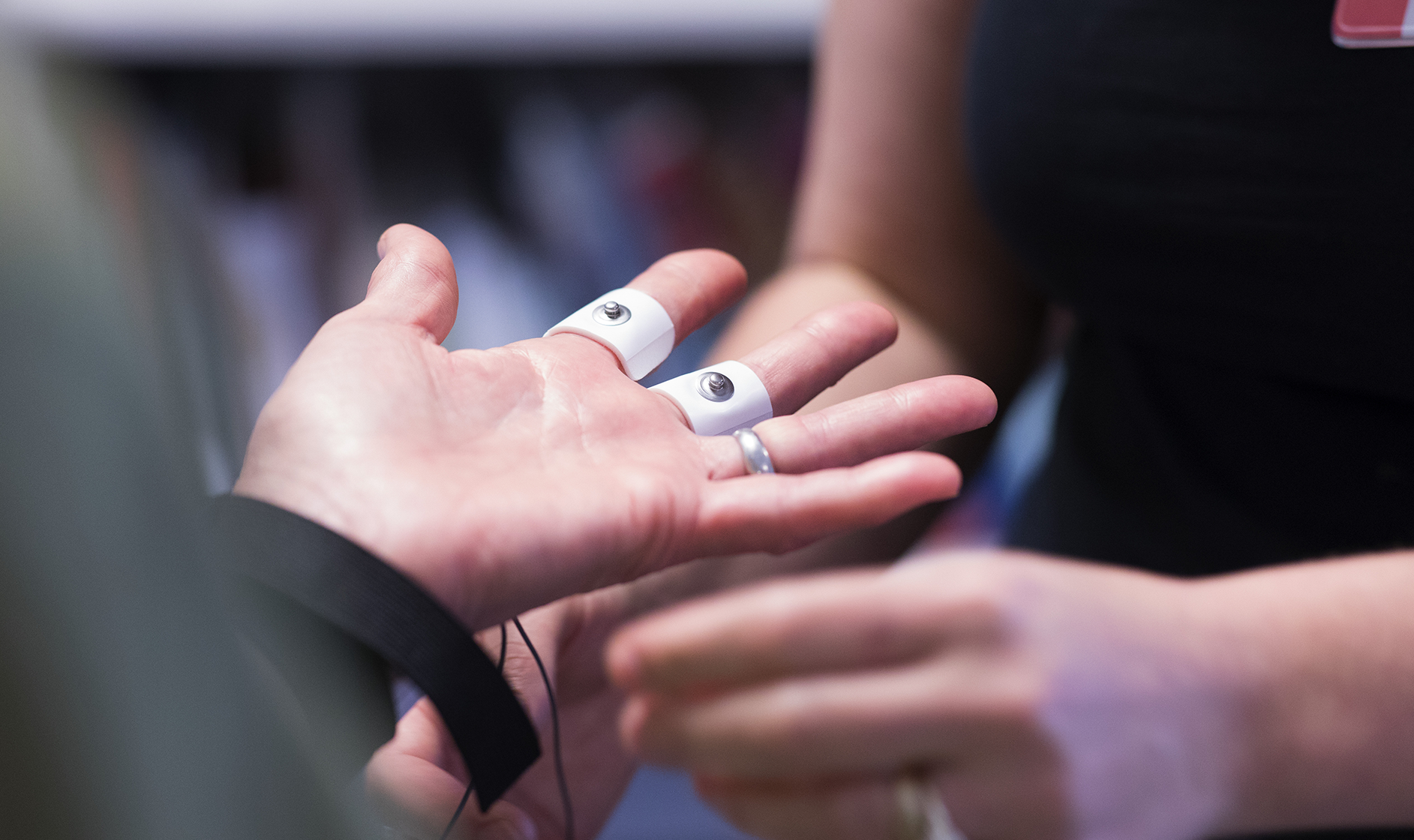How Science is Informing new storytelling methods
Aug 13, 2018 admin
Part two of our Project Curiosity series
We’ve been looking at the troubling trends (read our first post here) around news fatigue and how that is affecting communications. With so much information coming at us -- and so much of it negative -- people are tuning out. Now, organizations are turning to science to find innovative ways to connect with their intended audiences.
One of the ways to learn how to effectively tell a story so that it both resonates and sustains with your audiences is to understand what storytelling does to the brain--the organ that controls our emotions, memory, and curiosity.
Dr. Uri Hasson, a neuroscientist from Princeton, studied MRI scans of the brain to understand “human communication systems in effective storytelling.” In the scans he saw that when people hear the same story, their brains respond in very similar ways so that each individual listener to the story is “aligned” to each other neurologically. What Dr. Hasson also found, however, was that “our ability to communicate relies only on our ability to have common ground.” In terms of the news media, when we are exposed to the same stories repeatedly from the same source, it causes our brains to think in similar ways so that we are only responding to people who think like us, or whose news feed has similar algorithmic patterns. This issue is intensifying as news consumption becomes more fragmented and people self-select what information they want to consume. For example, if you receive most of your news from the New York Times, as you expose yourself more and more to this one outlet it becomes harder to understand the perspectives of someone completely different, like a Fox News follower.
Journalists are aware of this challenge and looking for answers. Amanda Ripley of the Solutions Journalism Network, in her excellent article “Complicating the Narratives,” says reporters are amplifying tensions and conflict, allowing the negativity to “sit.” Audiences are repelled by this dynamic. Ripley partnered with conflict resolution experts such as psychologists and mediators to find new ways for the media to engage. “If we want to learn the truth, we have to find new ways to listen. If we want our best work to have consequences, we have to be heard,” she said. Ripley offers six takeaways for anyone telling stories through the media:
- Help audiences understand that there is complexity and nuance in every story.
- Widen the lens of the narrative to give it context of larger or issues or trends.
- Explore and understand the emotional drivers behind the conflict.
- Build trust with your audience by making the reporting transparent; also, turn to them to see if you’re even asking the right questions.
- Expose your audience to “the other tribe.” In the same way that Dr. Hasson sees opportunities to align with others, expose them to alternative point of views.
- Counter confirmation bias, carefully. Do not allow your audiences to fall into the trap of having their own prejudices and “pre-existing narratives” reaffirmed in your stories and know that repeating negativity can actually reinforce these pre-existing beliefs.
“Researchers have a name for the kind of divide America is currently experiencing,” Ripley writes. “They call this an “intractable conflict…In this dynamic, people’s encounters with the other tribe (political, religious, ethnic, racial or otherwise) become more and more charged. And the brain behaves differently in charged interactions. It’s impossible to feel curious, for example, while also feeling threatened.”
Outside the realm of journalism, other institutions are also turning to science to foster more authentic connections with their audiences. The Peabody Essex Museum (PEM), with a grant from the Barr Foundation, hired neuroscientist Tedi Asher to collect data on how people react to art and museum exhibit spaces in real-life. Specifically, her research is looking at “how emotions play into forming memories and direct attention and mood.” Part of her work involves giving visitors four ways to engage with the art. These include: offering no prompt, which allows the viewer to “see” the work however they come to it; to read a label about the art; to respond to interpretive comments such as “note the use of color in this piece;” and finally, answer a self-referential question such as how they relate to the art. Asher’s hypothesis is that providing visitors with any prompt will help them engage but the fourth option will help have the most impact because it’s about them.
To make powerful connections and lasting memories, audiences have to see themselves within your stories.
I personally will be a part of this study, going to PEM in a couple of weeks to have Asher measure my brain’s response to their new exhibit Sally Mann: A Thousand Crossings.

Asher is employing a neuroscientific study at the Peabody Essex Museum.
PEM’s creative approach to visitor engagement reflects what many cultural institutions recently realized, which is that the old model of thinking -- “simply create and they will come”-- is no longer viable. This is an important lesson for public relations as well. Just because a business or organization has something to say does not mean anyone will care. It’s our job to find ways to make them pay attention, not by force of course, but with an authentic message that applies to them.
In order for us to create effective campaigns, we need to understand the broader changes in society. Culture Track, which researches culture and “shifting patterns of audience behavior” through data collection, found that in the three years since their last study in 2014, “the definition of culture has democratized, nearly to the point of extinction.” Culture is anyone’s game now, with no set rules or definitions.
Beyoncé and Jay-Z’s music video Apesh**t, filmed at the Louvre in June, is a perfect example. The Louvre as one of the most iconic museums in the world and home to some of the most famous pieces of art. The institution also embodies what many now criticize museums for being: wealthy, elitist, Eurocentric, and upholding colonialist ideology. And yet, it is still one of the most popular museums in the world. The Carters complicated the narrative, superimposing modern Black imagery over the European art to convey their own views and political messages. The video went viral and the Louvre now offers an Apesh**t tour to explore and teach their visitors about the art featured in the video. The Louvre recognized an opportunity to make art history relevant in popular culture.
Haven’t seen the Beyoncé and Jay-Z video yet? Click on the image to watch.
The Culture Track makes it clear that the definition of culture is changing; the best connections happen when audiences can reference themselves with what is being offered; and technology can be an important tool, but some may find it distracting -- as always, you need to know your audience or even consult with them to ensure you are on target. It’s one of the ways audiences and consumers stay loyal to a product or organization. But be forewarned, audiences also care about “SROI” -- the Social Return on Investment. In other words, people want to be involved with organizations they feel are changing the world.
The complicated workings of the brain is what drives us as human beings. Studying the brain to see what is happening on a subconscious and neurological level is offering new insights for audience engagement. Stories need to be relevant to the person who hears them. They need to be created with empathy. And the storyteller must have a reciprocal relationship with the listener.
Please follow along with #ProjectCuriosity. Share your thoughts and sign up here to receive our next installment.
Featured image blog post credit: © 2018 Peabody Essex Museum. Photography by Bob Packert.






